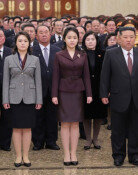Korean Air aggravates nut incident in attempts to conceal truth
Korean Air aggravates nut incident in attempts to conceal truth
Posted December. 16, 2014 08:20,
It has been a week since the so-called "Nutty Flight Return" incident was reported to the public. If had handled properly, the incident could have been known as a mere aberration of Cho Hyun-ah, former vice president and the third generation of Hanjin Group`s owner family. Now the incident has grown to a serious state where legal punishment awaits the heiress.
As the biggest reason behind such an out-of-control growth of the incident, risk management experts pick the fact that Korean Air viewed the incident solely from its own perspective. When the public got angry by "high-handed behaviors of the airline owner," the company made an apology by promising to enhance quality of its service." Koreas No.1 carrier started on the wrong foot when trying to resolve the issue.
Korean Air misread the situation from the beginning, and revealed a critical problem in its decision-making structure. As the situation was getting worse, the company provided some countermeasures such as an apology statement and Chos resignation from executive positions of the company. However, the PR team, an official window of the company, failed to see the truth behind the situation. It is because the nations largest carrier has a closed decision-making structure to mindlessly pass on to the public the decision made by few aides of the owner.
The public was outraged. Mentioning of Korean Air amounted to around 300 on the SNS in average a day. After the nut incident made public, however, the number of mentioning soared to around 10,000 a day at maximum. The public couldnt feel sympathetic toward the airlines view to see the incident and even sincerity of its apology.
Senior consultant Yoo Min-yeong of Acase, a risk management company, said, Korean leadership has faced a turning-point to change its vertical "follow me" paradigm to a horizontal structure. To overcome risks successfully, companies must transform their leadership to have more horizontal structure and communicate with sincerity.






![전기매트 틀고 자면 몸에 전자파 쌓인다?” 직접 측정해보니 [알쓸톡]](https://dimg.donga.com/c/138/175/90/1/wps/NEWS/IMAGE/2026/01/02/133079758.3.jpg)
